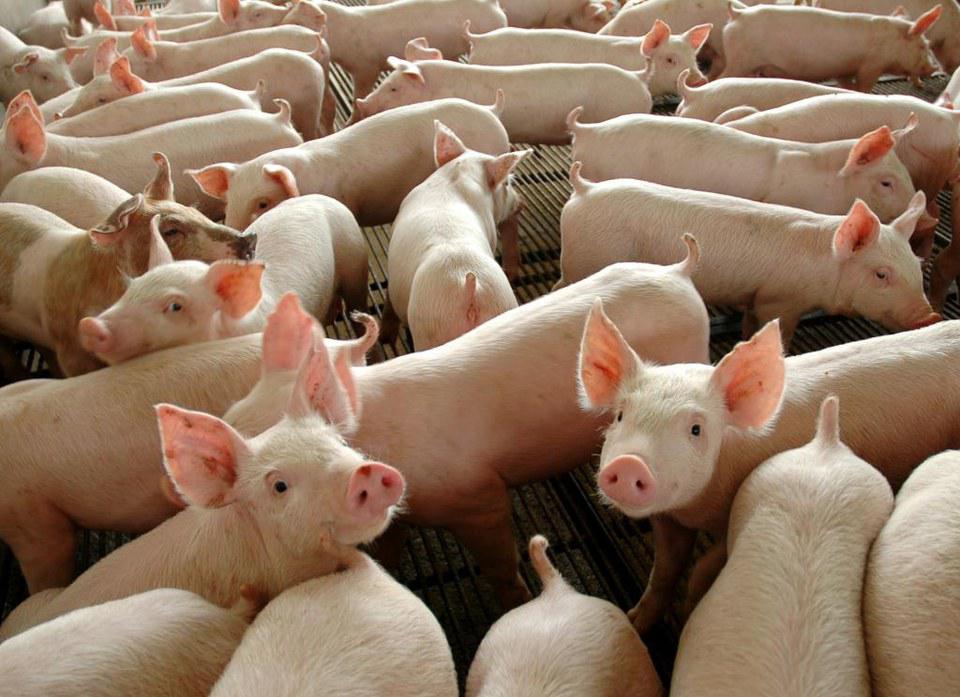Carcass and live pig prices have been falling since the beginning of the second half of August in Brazil, with slaughterhouses reticent about negotiations, considering the difficulties with meat flow and high stocks. On September 29, the average price per live kilogram traded in the Center-South of the country was BRL 5.93, a decline of 9% from the closing of the first half of August (BRL 6.52). The decline in carcass traded in the region in the same period is even greater, reaching 12.62%, from BRL 10.46 per kilogram to the current BRL 9.14. Besides the fragile prices, the cost of production remains high, with corn and soymeal showing a situation of stress, putting pressure on the margins of the activity. The “nervous” world financial market and the election period affected the exchange rate and the price dynamics of these inputs. Corn producers have been holding supply in much of the country. Logistics issues also impact the CIF price of the cereal in Santa Catarina and Rio Grande do Sul, major pork-producing regions.
The loss per pig, which had been falling over the past few months, has increased again. The attached graph shows the curve of the average price of live pigs in Santa Catarina and the cost of Embrapa. The September cost follows the line of market comments, considering that the entity’s latest data refer to August. The scenario is critical and requires the continuity of production adjustment measures, such as the reduction of births. An adoption used over the last few months by the market is the reduction of the average birth weight. The situation of independent farmers is more delicate, as they have a less robust capital structure compared to integrators. The high interest rates on credit and the uncertainties regarding the return of positive margins are points that can stimulate the continuation of high slaughter, with less efficient pig farmers quitting the market, which can hinder the recovery of prices along the chain. The practical result of the production adjustment must only be observed in the medium and long term.
Exports are one point that has been emerging in the market. If the export numbers are strong (August set a monthly record), should not prices be sustained in the domestic market? It is worth noting that the availability formula is made up of production + imports – exports. Brazil does not import pork because it has production surpluses. Thus, if prices are falling, there is some supply that the domestic market is not able to absorb, as will be described later. In addition, a complicating factor at this point is the fragility of competing proteins. Fattened cattle and live chicken have shown sharp declines in several states, which has a negative impact on pigs. It is also worth noting that pork is the third most preferred by Brazilians.
The attached table shows the Brazilian pork production at 448.1 thousand tons in August, still preliminary data, being the second largest volume this year and in history, second only to March 2023. As for the 427.9 thousand tons registered in July, the advance is 4.72%. The current price scenario in the Brazilian market would be worse if exports had not increased 20.7% in August compared to July, reaching 114.1 thousand tons against 94.5 thousand tons. September must be another positive month for shipments. Until the fourth week of September, Brazil exported 78.394 thousand tons of fresh pork, with a daily average of 4.899 thousand tons, according to SECEX. Following this average in the last week of the month plus processed pork, the exported volume may close at around 110 thousand tons.
For prices in the pig chain to find healthy and sustainable levels, domestic availability needs to shrink. Exports are already strong, therefore, production adjustments are necessary. The market is still waiting for prices to recover in the last quarter of the year, which may happen, but not to the point of bringing positive margins across the country. The preparations of retail and meat packers for the end-of-year festivities, the World Cup and the entry of the thirteenth salary in the economy are favorable points. After the end of the year, the scenario will be challenging again, demand for pork historically falls in the first quarter, with high temperatures, school holidays, and household indebtedness. The cost of production also needs to be closely monitored in the first half of 2023. Soybeans tend to be pressured in the new crop, considering the estimates of record production. On the other hand, corn may show firm prices, as typically occurs in the first half of the year. In terms of volume, the summer crop is much lower than the second crop, and logistics tend to be difficult in the first quarter due to the outflow of soybeans. Variables such as exchange rate and climate will deserve constant attention until then.

